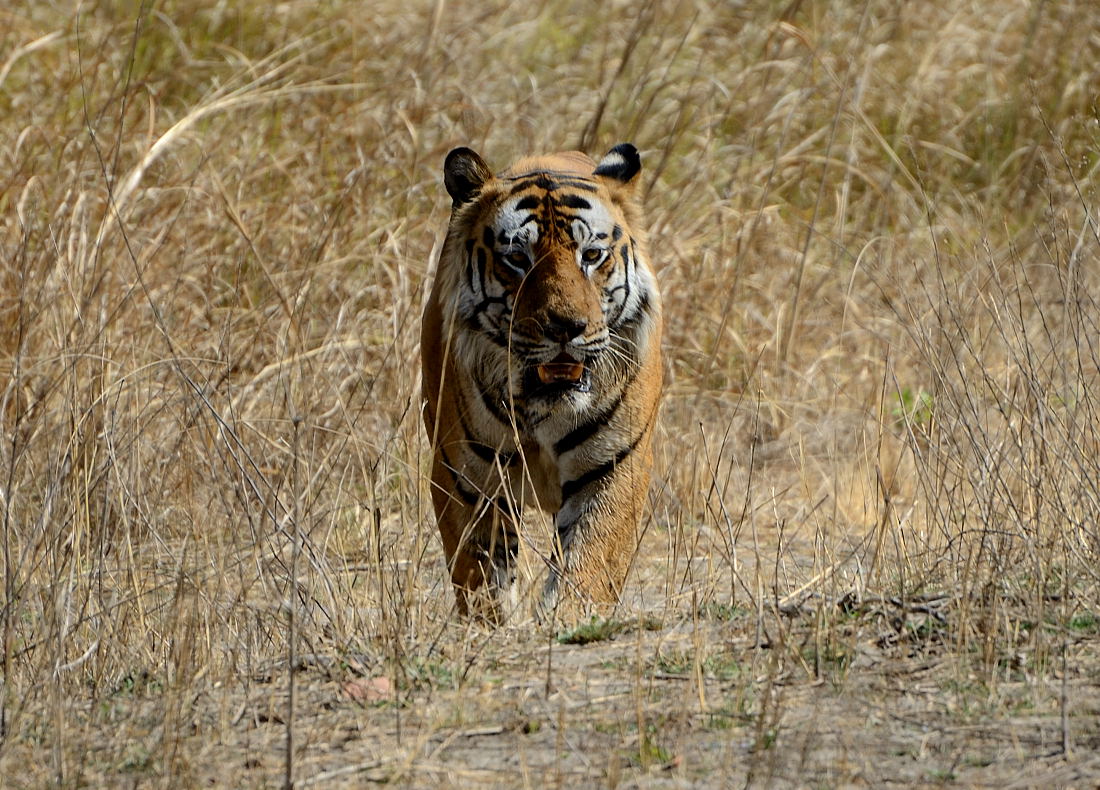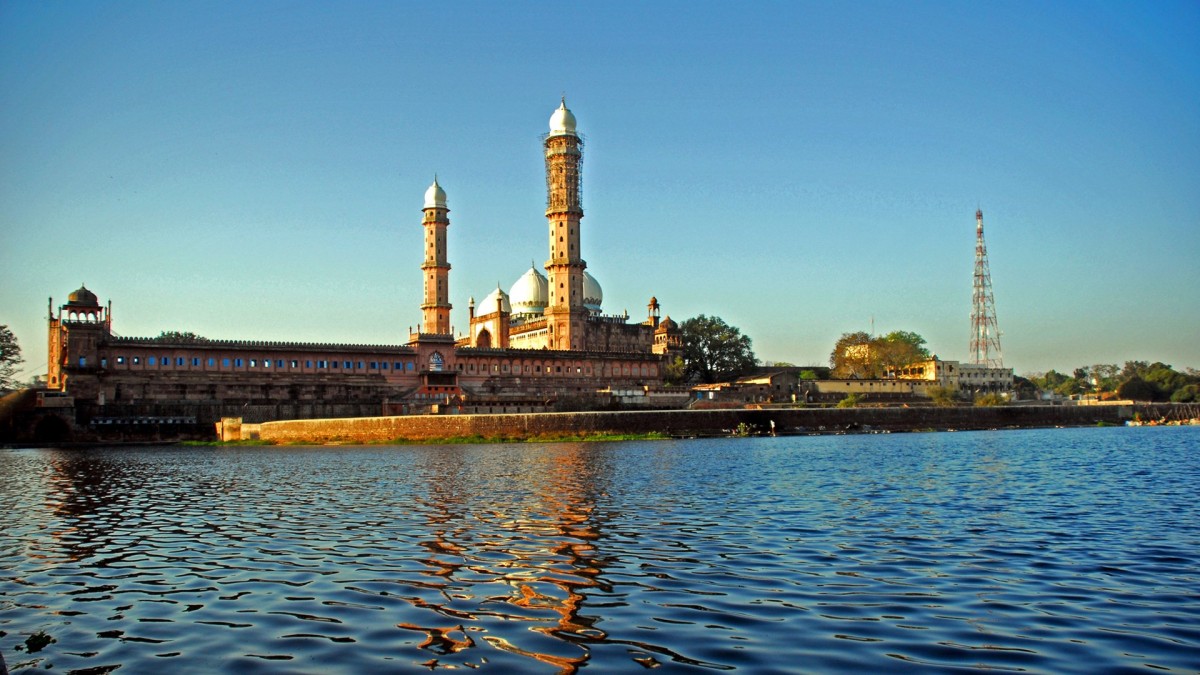
Khajuraho Tourism and Travel Guide
History of Khajuraho
The Ancient dynasties are often covered in a veil of mystery, largely because written records are rare and, as is often the case in India, myth and legend weave their way over time into the history of their origin and their reign. And when the dynasty leaves a legacy as contradictory as the Khajuraho temples, with their mix of the religious and the sensuous, the web is woven of brighter threads, the accompanying legends more colourful.Khajuraho or ‘Khajur-vahika’ (bearer of date palms), also known as ‘Khajjurpura’ in ancient times, evidently derives its name from the golden date palms (khajur) that adorned its city gates and, if the different legendary

versions are to be believed, it owes its existence to an enchanting maiden named Hemvati.
According to the account of the medieval court poet, Chandbardai, in the Mahoba-khand of his Prithviraj Raso, Hemvati was the beautiful daughter of Hemraj, the royal priest of Kashi (Varanasi). One summer night, while she was bathing in the sparkling waters of a lotus-filled pond, the Moon god was so awestruck by her beauty that he descended to earth in human form and ravished her.
The distressed Hemvati, who was unfortunately a child widow, threatened to curse the god for ruining her life and reputation. To make amends for his folly the Moon god promised that she would become the mother of a valiant son. ‘Take him to Khajjurpura’, he is believed to have said. ‘He will be a great king and build numerous temples surrounded by lakes and gardens. He will also perform a yagya (religious ceremony) through which your sin will be washed away.’ Following his instructions, Hemvati left her home to give birth to her son in a tiny village. The child, Chandravarman, was as lustrous as his father, brave and strong. By the time he was 16 years old he could kill tigers or lions with his bare hands. Delighted by his feats, Hemvati invoked the Moon god, who presented their son with a touchstone which could turn iron into gold, and installed him as king atKhajuraho.
Chandravarman achieved a series of brilliant victories and built a mighty fortress at Kalinjar. At his mother’s request he began the building of 85 glorious temples with lakes and gardens at Khajuraho and performed the bhandya-yagya which expunged her of her guilt. A variation of the same legend introduces Hemvati as the widowed daughter of Mani Ram, the royal priest of Kalinjar. As a result of a mistake in his calculations the priest informed his king that a particular night was Puranmasi (full moon night) and not the dark night that it actually turned out to be.
In her concern for her father’s reputation the beautiful Hemvati prayed to the Moon god, who was gracious enough to uphold the word of the priest but, inreturn for his favour, ravished the daughter. The grieving father was so shame-stricken that he cursed himself and turned into a stone, which was later worshipped by the Chandelas as Maniya Dev. Hemvati gave birth to a son, the sage Chandrateya, who was later at the helm of the Chandela clan. Historically speaking, the area and aura around Khajuraho has always been renowned for its cultural achievements.
Climate of Khajuraho
The climate of this region is tropical. The climate of Khajuraho is of an extreme type. The summers are hot with the mercury climbing up to 47°C. On the other hand, winters can be very cold with temperature dipping down to 4°C. The monsoon starts from the month of July and lasts until September. The annual average rainfall is 114 cm. The best time to travel to Khajuraho is October to March.

Khajuraho Temples
The temples of Khajuraho are India’s unique gift to the world, representing, as they do, a paean to life, to love, to joy; perfect in execution and sublime in expression. Life, in every form and mood, has been capured in stone, testifying not only to the craftsman’s artistry but also to the extraordinary breadth of vision of the Chandela Rajputs under whose rule the temples were conceived and constructed.
The world renowned temple town of Khajuraho in Madhya Pradesh designated by UNESCO as a world heritage site for its archaeological and historical monuments.
The Khajuraho temples were built in the short span of a hundred years, from 950-1050AD in a truly inspired burst of creativity. Of the 85 original temples, 22 have survived till today to constitute one of the world’s great artistic wonders.
The Creators of Khajuraho claimed descent from the moon and the legend behind the founding of this great dynasty and the temples is a fascinating one. Hemwati, the lovely young daughter of a Brahmin priest, was seduced by the moon-god while bathing in a forest pool. The child born of this union was Chandravarman, founder of the Chandela dynasty. Brought up in the forests by his mother who sought refuge from a sensorious society, Chandravarman, when established as a ruler, had a dream-visitation from his mother. It is said that she implored him to build temples that would reveal human passions, and in doing so, bring about a realization of the emptiness of human desire. It is also possible that the Chandelas were followers of the Tantric cult, which believes that gratification of earthly desires is a step towards attaining the infinite liberation of nirvana.
Why they chose Khajuraho, even then a small village, as the site for their great complex is also open to of their faith and the many beliefs represented in the temples, the Chandelas conceived Khajuraho as a seat of religion and learning, to bring together many sects.
With their decline, the temples lay forgotten for many centuries, covered by the encroaching forests, victim to the ravages of the elements. Re-discovered only in this century, restored and claned, the temples of Khajuraho once again testify to a past glory.
Architecturally too, they are unique, being very different from the temple prototype of their period. Each stands on a high masonry platform with a marked upward direction in the structure, further enhanced by vertical projections to create the effect of grace and lightness. Each of the chief compartments is mounted by its own roof, grouped so that the highest is in the centre, the lowest over the portico; a highly imaginative recreation of the rising peaks of the Himalayas, abode of the gods.
The three main compartments are the entrance (ardha-mandapa), assembly hall (mandapa) and sanctum (garbha griha), with further additions in the more developed temples.
Archaeological Museum
Erstwhile capital of the Chandela Dynasty, Khajuraho is well known as the temple town. The beautifully carved and decorated temples of Khajuraho are now a UNESCO World Heritage Site.
Apart from the temples there are other monuments in Khajuraho which are equally well known. The architecture and design of the Archaeological Museum Khajuraho is marvelous.
How to Reach Khajuraho?
By Air: Khajuraho has an airport in the city. It is a domestic airport. Several airlines regularly service the Khajuraho airport by flights from Delhi, Agra, Varanasi.
By Road: There is a good network of roads that connects Khajuraho to Agra (395kms), Jhansi (on the Delhi – Mumbai road link), Orchha.
By Rail: Khajuraho does not have a railway station of its own. The most convenient railhead is Jhansi and Satna (on the Mumbai – Allahabad railway link). Jhansi is 175kms away from Khajuraho whereas distance from Satna is 120kms. Many important trains service both the railway stations regularly.

















